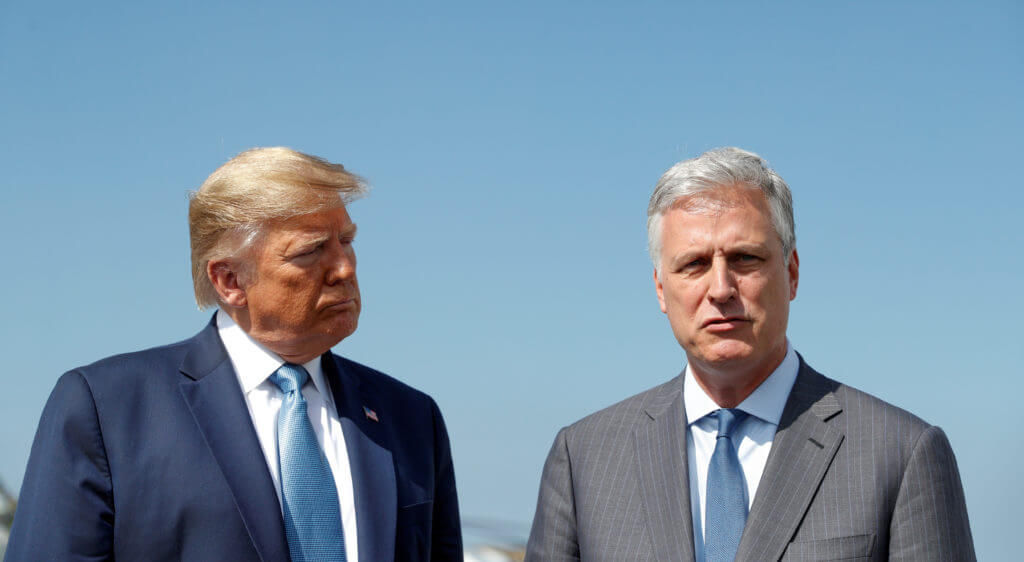The United States (US) declassified its strategy to ensure the country’s primacy in the Indo-Pacific on Tuesday, which focuses on supporting New Delhi’s rise as the US’ major defence partner in the region and a strong counterbalance to Beijing, strengthening relations with the ‘Quad’, and defending US allies and partners (read: Taiwan) against foreign aggression, and pressuring North Korea into relinquishing its nuclear weapons.
National Security Advisor Robert O’Brien announced the publication of the document, titled “United States Strategic Framework for the Indo-Pacific,” saying that it has provided the “overarching strategic guidance” for US actions in the region since 2017 and that its release was aimed at communicating to the American people Washington’s “enduring commitment to this vital region”.
“Beijing is increasingly pressuring Indo-Pacific nations to subordinate their freedom and sovereignty to a ‘common destiny’ envisioned by the Chinese Communist Party,” O’Brien said in a statement. “The US approach is different. We seek to ensure that our allies and partners – all who share the values and aspirations of a free and open Indo-Pacific – can preserve and protect their sovereignty. The Framework recognizes that a free and open Indo-Pacific depends on robust American leadership. The United States has a long history of fighting back against repressive regimes on behalf of those who value freedom and openness. As the world’s largest economy, with the strongest military and vibrant democracy, it is incumbent on the United States to lead from the front,” he added.
The plan looks at China and North Korea as the biggest threats to US interests and allies in the Indo-Pacific and lays out a variety of objectives and actions to address the challenge they pose. Assuming China’s broader aim to be to “dissolve US alliances and partnerships in the region” and “exploit vacuums and opportunities created by these diminished bonds”, the text suggests responding by countering Beijing’s “predatory economic practices”, building an international consensus that China’s industrial policies and unfair trading practices hurt the global system, and working with allies and like-minded countries to “prevent Chinese acquisition of military and strategic capabilities”.
The document further singles out India as a key partner in achieving this goal, describing it as a dominant power in South Asia who can help “preserve maritime security and counter Chinese influence in South and Southeast Asia and other regions of mutual concern”. It also recommends working with regional alliances like ASEAN to “promote and reinforce their role in the region’s security architecture”, while also developing an “integrated economic development model in the Indo-Pacific that provides a credible alternative to One Belt One Road”.
Additionally, the text emphasizes the need to defend first island-chain nations, including Taiwan, and enabling Taipei “to develop an effective asymmetric defence strategy and capabilities that will help ensure its security, freedom from coercion, resilience, and ability to engage China on its own terms.”
As for North Korea, the US objective remains the same: “convince the Kim regime that the only path to its survival is to relinquish its nuclear weapons.” The framework calls to “maximize pressure on Pyongyang using economic, diplomatic, military, law enforcement, intelligence, and information tools to cripple North Korea’s weapons of mass destruction programs, choke off currency flows, weaken the regime, and set the conditions for negotiations aimed at reversing its nuclear and missile programs, ultimately achieving the complete, verifiable, and irreversible denuclearization” of the Korean Peninsula. “Do this by: (1) helping South Korea and Japan acquire advanced, conventional military capabilities; (2) drawing South Korea and Japan closer to one another,” it states.
The declassification of the document comes just a week before President-elect Biden is due to take office. Biden has said that he intends to take a more cooperation-based approach with allies and partners against China, and experts like Rory Medcalf, a professor and head of the National Security College at the Australian National University, suggest that the framework will have “enduring value as the beginning of a whole of government blueprint for handling strategic rivalry” with Beijing. “If the US is serious about that long-term contest, it will not be able to choose between getting its house in order domestically and projecting power in the Indo-Pacific. It will need to do both at once,” Medcalf wrote in a post for the Australian Strategic Policy Institute research group.
US Declassifies Indo-Pacific Strategic Framework, Singles Out India as Key Partner
NSA Robert O’Brien announced the publication of the document, saying that its release was aimed at communicating to the American people Washington’s “enduring commitment to this vital region”.
January 14, 2021

US President Donald Trump and NSA Robert O’Brien SOURCE: TOM BRENNER/REUTERS via PBS
